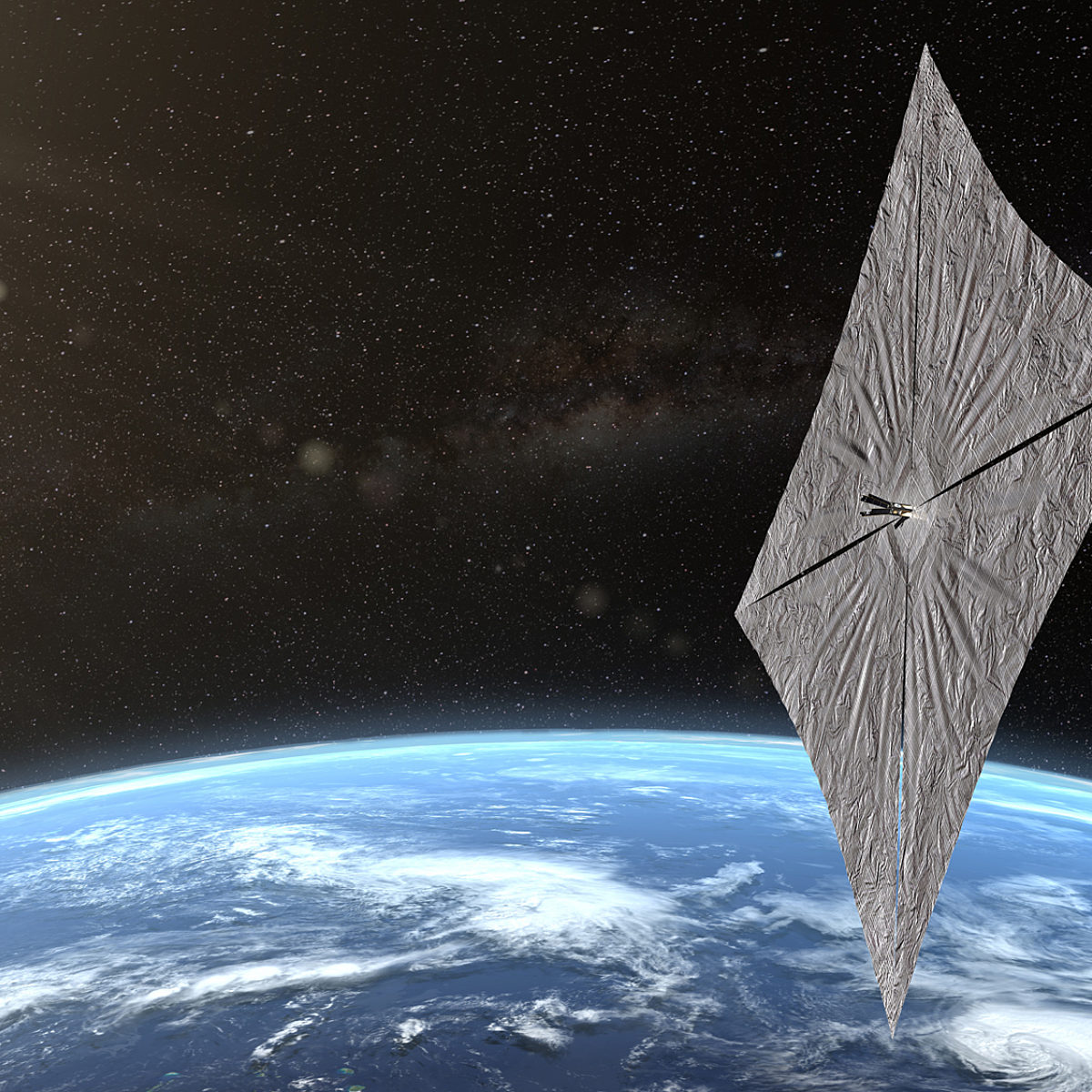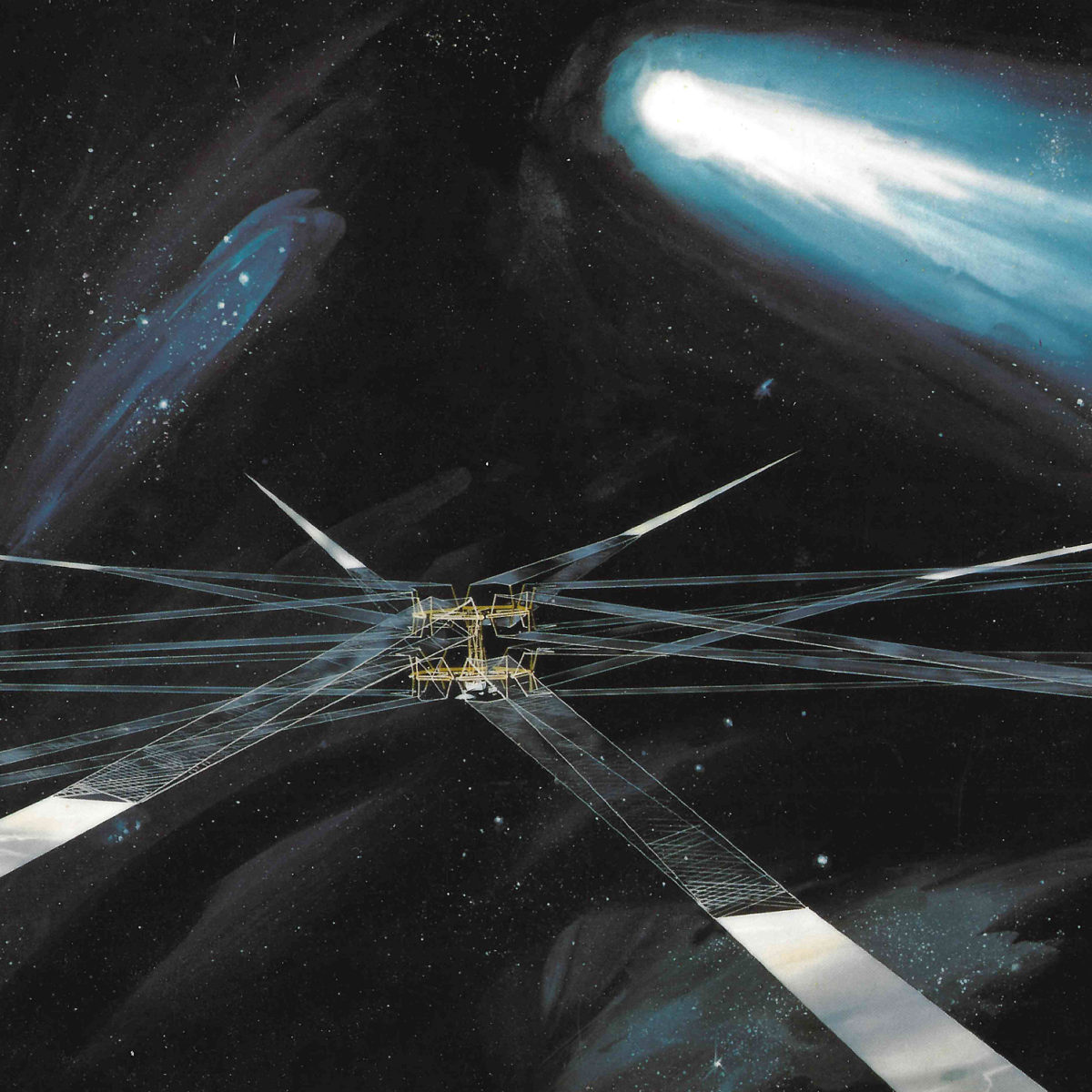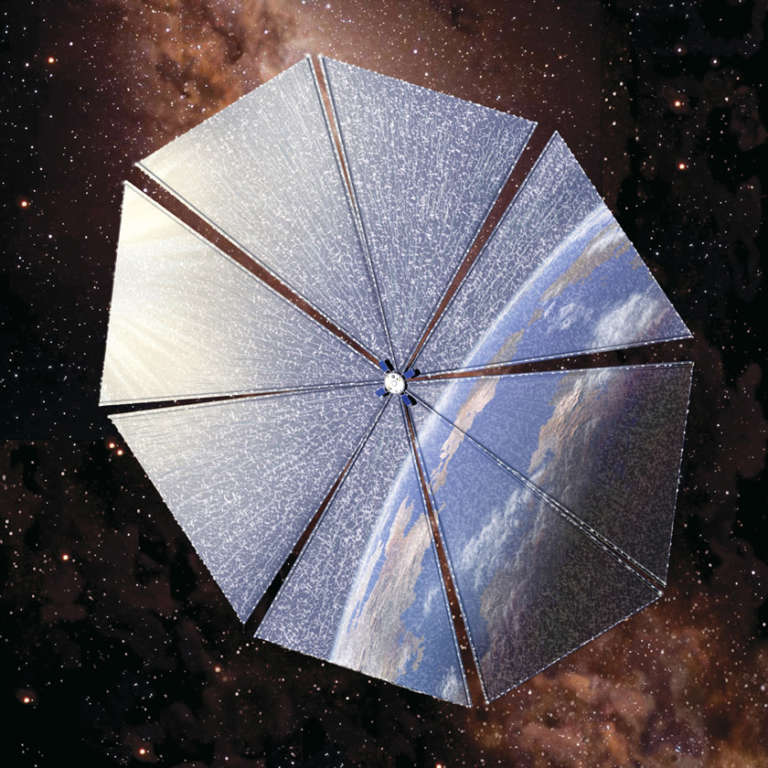The Story of LightSail, Part 3
This article is adapted from a chapter in Louis Friedman’s book, Human Spaceflight: From Mars to the Stars.
Following the loss of Cosmos 1, our board of directors, and particularly Ann Druyan, remained strong supporters, urging me to not give up and expressing confidence in our abilities to recover from the setback. Ann, with her entrepreneurial interest in Cosmos Studios, tried hard with me to find new sponsors and donors. It seemed a natural fit for media companies, and she was successful in getting seed funding from the Discovery Channel—which enabled us to investigate several ideas ranging from a Cosmos 1 repeat to new smaller spacecraft with lower costs and risks.
But the Discovery Channel funding was only seed money, and no media deal could be made to continue their support. Finally, after four years, another serendipitous confluence of funding and technical opportunity emerged to create a new solar sail project. The technical opportunity originated with NASA’s NanoSail-D spacecraft—a low-cost, creative skunk-works project of two NASA Centers: the Ames Research Center and Marshall Space Flight Center. It had suffered the same fate as Cosmos 1: Its launch failed, on the maiden flight of the new commercially developed Falcon rocket, in August 2008, and the spacecraft was lost. The NASA program that created NanoSail-D was shutting down, but they had a spare spacecraft, and they offered it to The Planetary Society if we would arrange for its launch.
We said yes, but after six months of talk, NASA could not take yes for an answer. They found another partner with the U.S. Department of Defense, building a satellite called FASTSAT. However, by that time Jim Cantrell (the leader and system design manager for The Planetary Society solar sail team) and I were impressed with the ultra-lightweight design of NanoSail. We got together with Tomas Svitek, who ran a small company with a big name, Stellar Exploration, Inc., and who was an expert on nano-spacecraft design. After some consideration, we believed that we didn’t actually need the spare NanoSail spacecraft but that we could make a new and improved one of our own.
What is solar sailing?
A solar sail, simply put, is a spacecraft propelled by sunlight. Whereas conventional rockets are propelled by the combustion of rocket fuel, a solar sail is pushed forward by light from the Sun.
Ours, unlike NanoSail-D, would have a control system, two-way radio communications, and onboard imaging cameras, and it would be launched to a high-enough orbit with negligible atmosphere to impede on solar sail flight. None of these attributes were in the NanoSail-D project. The lightweight, smaller design, which they pioneered, made it lower cost, more affordable, and more practical than Cosmos 1 to attempt the world’s first solar sail flight with private funding. It was an extremely innovative idea and one that led to a new generation of low-cost spacecraft for special-purpose missions. We could piggyback on the emerging CubeSat industry and on secondary launches from various candidate rockets around the world. Jim Cantrell, Tom Svitek, and I created a new solar sail team to make the attempt. This became LightSail.
Jim Cantrell first worked with The Planetary Society in the late 1980s as a student from Utah State University on our Mars balloon and Mars rover projects. Utah State had a fine aerospace engineering department influenced by Professor Frank Redd, who pioneered small spacecraft development, and Dr. Gilbert Moore, who was incredibly innovative in finding meaningful, exciting, educational projects for young people. Jim and another student, George Powell, went on to successful engineering and business careers after they first helped the society create the first privately funded projects for planetary exploration. Jim became an expert on Mars balloons, and The Planetary Society “lent” him to the French Space Agency to help them develop their proposal for flight on a Russian mission in the 1990s. Jim went on to work on a number of defense and civil space programs, including remarkable international cooperation ventures on classified defense projects. He also was one of the pioneers of the small spacecraft revolution that grew out of Utah State University. Today he splits his time between aerospace engineering (with his own company) and Trans Am sports car racing. He maintains extraordinary contacts throughout the aerospace industry—from the commercial and academic smallsat developers to the large defense contractors.
A lot of people in the aerospace industry (especially younger ones) were engaged with the new CubeSats and nanosat development. Many industry veterans regarded them as “toys” or as good for education projects but not for anything serious. But it was clear that nanosat spacecraft development was in its infancy and that technology was only going to get better and using it only more practical.
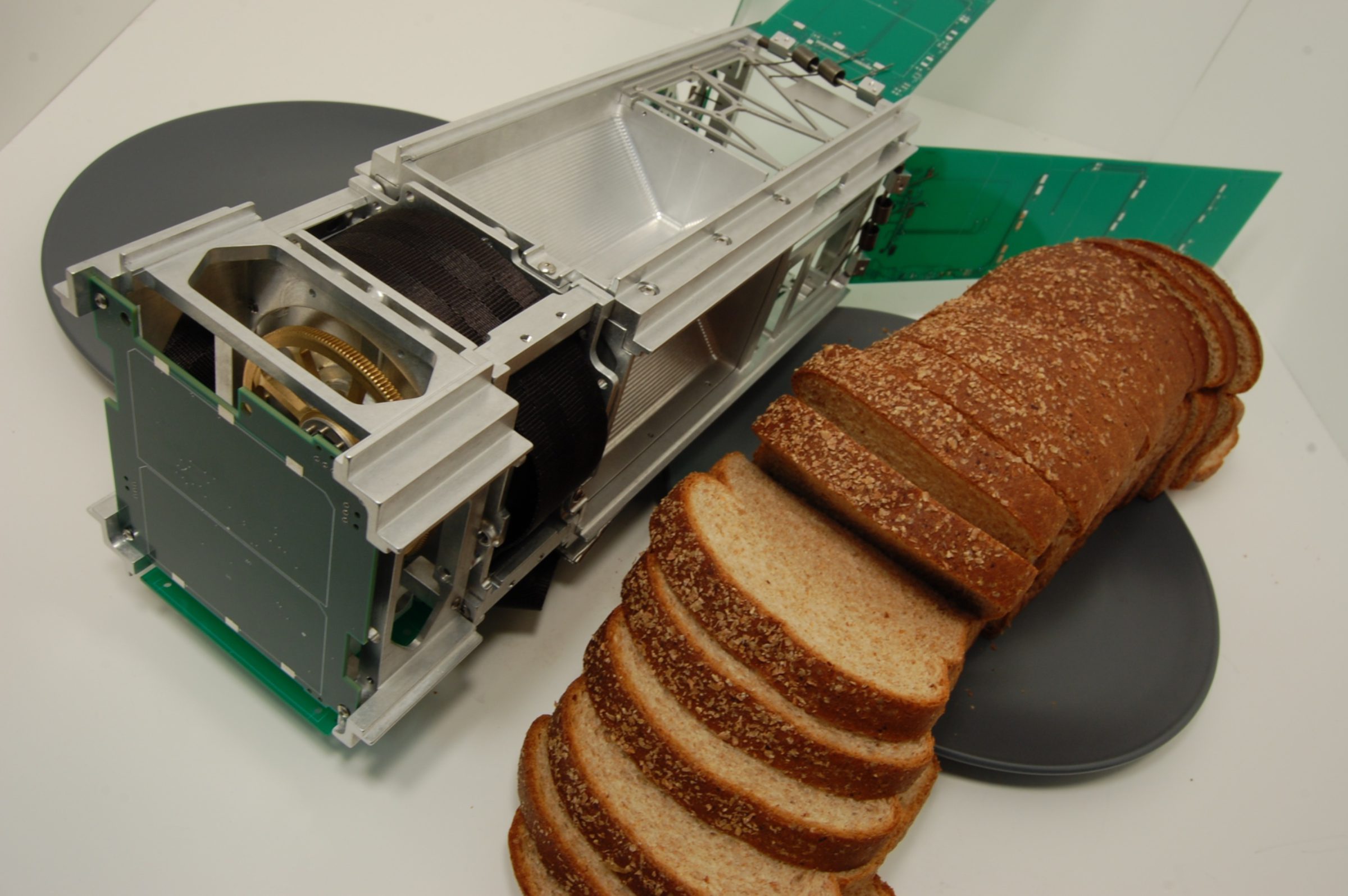
My friend and colleague Tom Svitek is also deeply knowledgeable about CubeSats and small spacecraft. Tom is a brilliant Caltech Ph.D. whom I first knew while he was still a student in his native Czechoslovakia. Tom was interested in solar sails then, and he wrote me a letter (in my capacity as the solar sail development leader at JPL), including a paper he was writing about the subject. We corresponded some and by luck were able to meet during an International Astronautical Congress in Paris in 1982. A couple of years later I arranged to meet him in Prague when I was there for a meeting of the International Halley Watch. Over some good Czech beer in a little pub, Tom told me that he and his family were escaping from behind the Iron Curtain and planning a surreptitious departure out of Czechoslovakia. I agreed to carry some papers of Tom’s out of the country. Later, after he and his family made it to Austria (walking out over the mountains while on a supposed holiday), my wife and I made plans to help Tom and his family get to America and get a start here. I carried his college transcript to Caltech, and he was admitted as a Ph.D. student under Bruce Murray.
Tom is extremely focused on building things to fly in space—instruments, subsystems, or, in the case of our LightSail, a complete spacecraft. He started his own company, Stellar Exploration, Inc., in San Luis Obispo, California (chosen because it was a good place to raise his large family and adjacent to an excellent aerospace engineering department at California Polytechnic University). Cal Poly is a leading center for CubeSat development and flight experience.
Tom, Jim, and I roughly estimated that we could build and fly the spacecraft for about $1.8 million. That was more than The Planetary Society could comfortably raise from ordinary member donations. As with Cosmos 1, we needed a major donor or sponsor to commit the bulk of the funding before we could engage our members for their support. The serendipitous funding opportunity came in mid-2009 when our development director, Andrea Carroll, mentioned that a society member from Texas had penned a little note on one of our mass mailings saying that he was interested in our solar sail ideas and that he had the means to provide significant funding. After she spoke to him, she was convinced he was sincere. We invited him to meet us in Pasadena. When he asked me (over breakfast), “If I gave you a million dollars, could you do it?” I blurted out, “Yes.” I think Andrea was startled at my too-quick answer—but I was sure with that kind of a lead gift we would raise the rest. We shook hands, I got a go-ahead from the society board of directors, and in September 2009, Jim, Tom, and I began the development of LightSail.
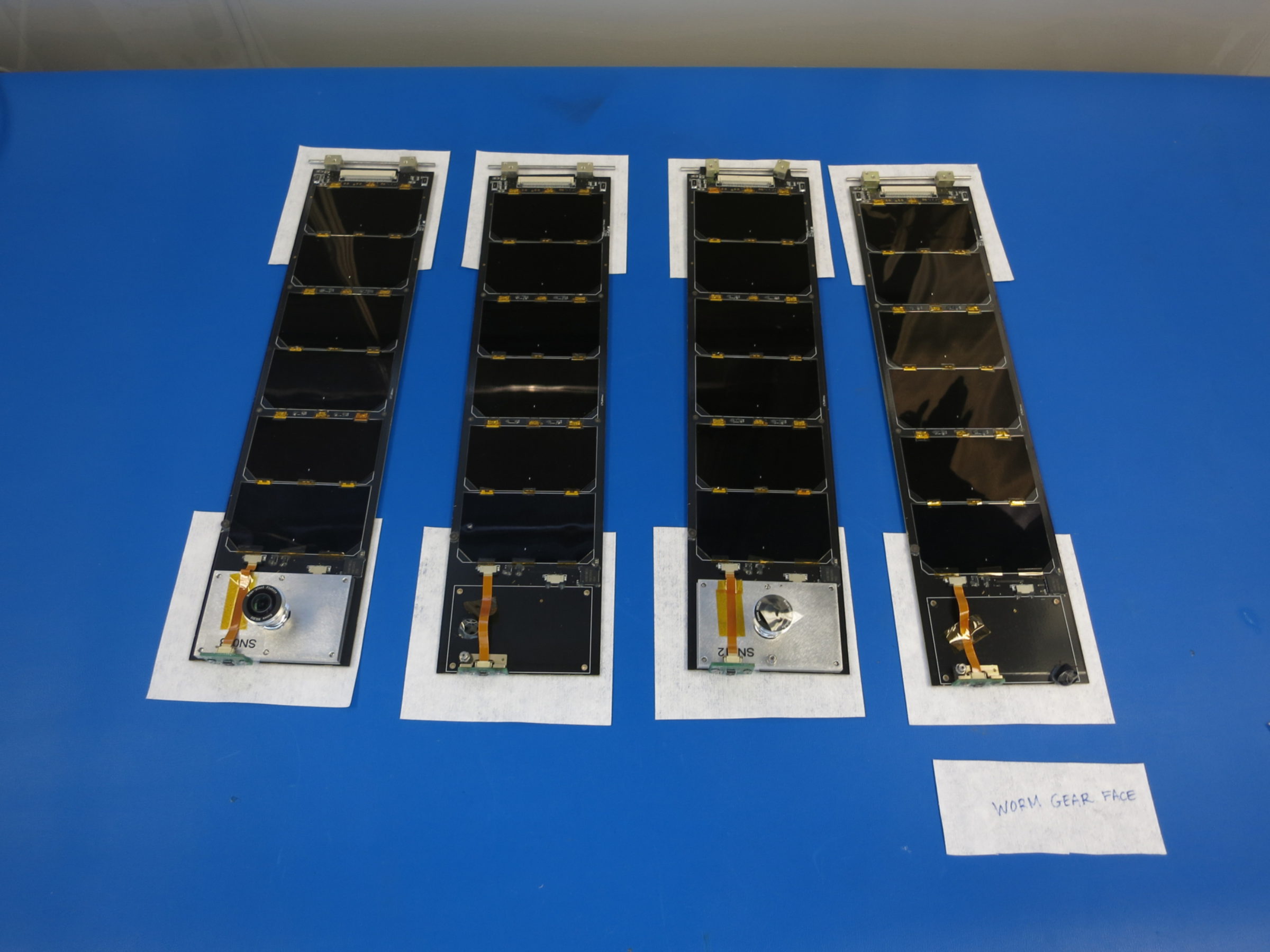
Our spacecraft, like NanoSail-D, was a 3-unit CubeSat with two units devoted to sail storage and one to electronics. In this animation, watching the sail deployment gives you a feeling for the small scale of the spacecraft versus the large area of sail.
The CubeSat units are approximately 10 centimeters on a side, and thus the whole spacecraft (30 by 10 by 10 centimeters) fits into a piece of carry-on luggage for an air flight. The LightSail design was the first CubeSat spacecraft to be fully functional with attitude control, radio, cameras, solar and battery power, and an onboard computer for command, control, and data processing. It has twice the sail area as NanoSail-D. It was the packaging of all this into CubeSats that convinced me that the nanosat design would lead to interstellar precursors.
We finished the spacecraft development in April 2012, but despite being selected for launch on NASA’s Educational Launch of Nanosatelites (ELaNa) program (through a cooperative agreement with NASA’s Ames Research Center), no suitable opportunity to launch us to a high-enough orbit had been identified. We were different than almost all other CubeSat-based spacecraft in that we needed to launch above 800 kilometers, to be above the Earth’s atmosphere so that the spacecraft could fly on solar pressure without the drag of atmospheric molecules. On May 4, 2012, after a week of final full-scale end-to-end system tests, mechanical and electrical testing, and communications system testing, we put the spacecraft into sealed storage awaiting the availability of a launch opportunity. We still had work to do—the software was incomplete and an update would be required before the final launch preparations, and we also were not fully confident about our radio and planned to investigate alternatives for a possible replacement. With funds running low, the spacecraft in storage and no launch date set, The Planetary Society board of directors put the project on hold, where it remained for the next year.
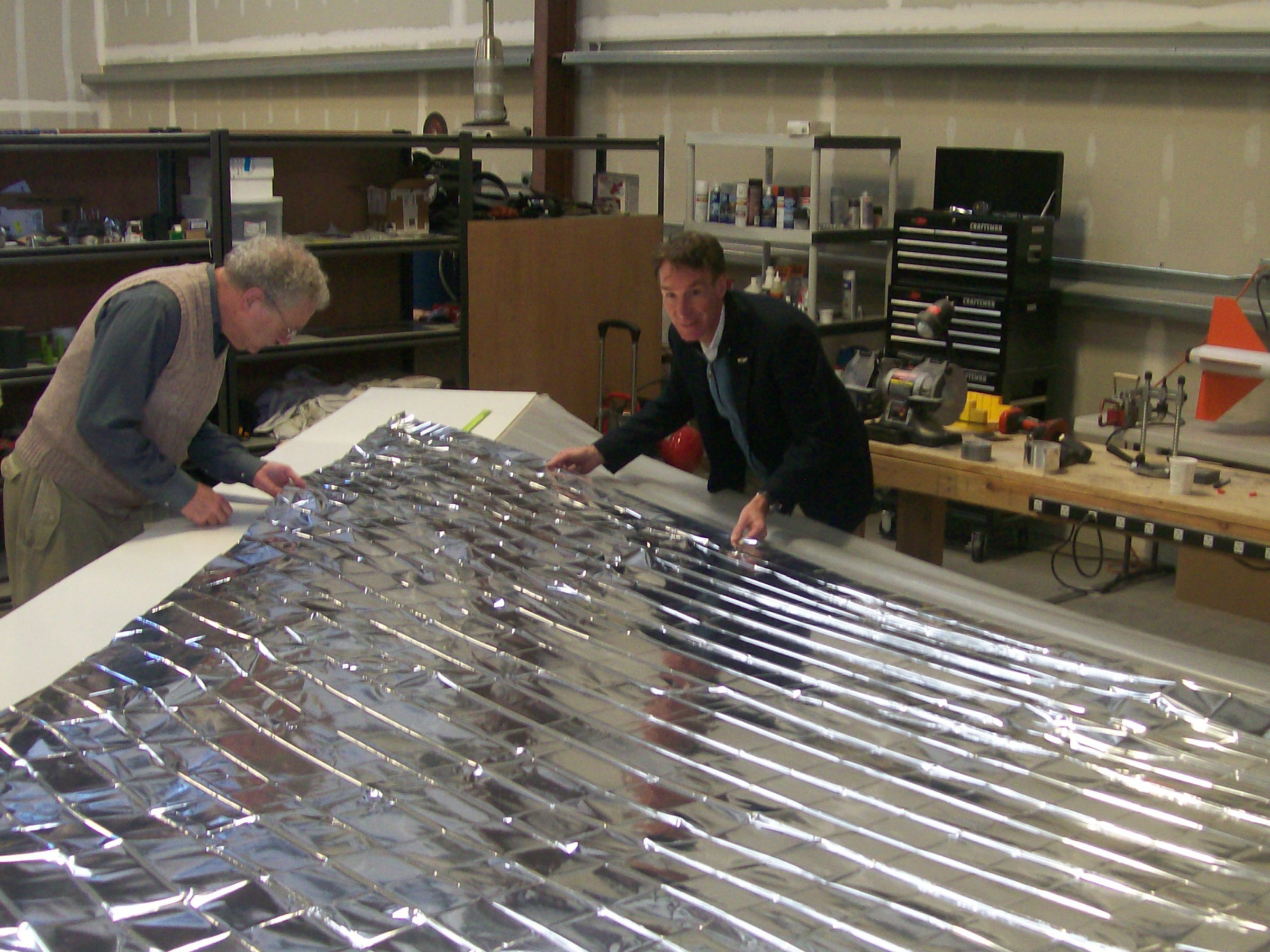
At that point, I stepped down as the project director. The society never got a NASA (ELaNa) launch to high-enough altitude, but they did get a lower-orbit launch in 2015 for a deployment test with what was our spare spacecraft. With a new team they took the spacecraft out of storage, completed their testing and prepared them for flight. They also made a cooperative agreement with Georgia Tech to have our prime spacecraft deployed by their Prox-1 (‘Prox’ stands for proximity) spacecraft, which they are developing for the Air Force. Prox-1 will be able to observe LightSail, which will be terrific. That launch is scheduled in 2016 on the maiden flight of Falcon Heavy, but the launch date is uncertain. Unfortunately, the altitude of Prox-1, and hence of LightSail, will be just a little lower that the desired 800 kilometers—but high enough for a meaningful solar sail flight.
The impetus behind The Planetary Society solar sail effort was to be first—first to initiate the technology that would someday take humanity to the stars and first to actually fly a sail with the force of light. We thought we would succeed when we built the first solar sail spacecraft (Cosmos 1), but its launch failed in 2005. We initiated our new attempt with LightSail® in 2009, but before we could get it built, the Japanese space agency JAXA successfully flew IKAROS (Interplanetary Kite-craft Accelerated by Radiation Of the Sun), and won the bragging rights for the first solar sail flight. IKAROS earned an entry in the Guinness Book of Records. Metaphorically, the wind had fallen out of our sails. On the positive side, our design had caught the attention of the rapidly enlarging small spacecraft community and was used as the basis for several NASA proposals in their new Edison (small satellite) program and by JPL for interplanetary CubeSat proposals. Our development was being passed on to its descendents.
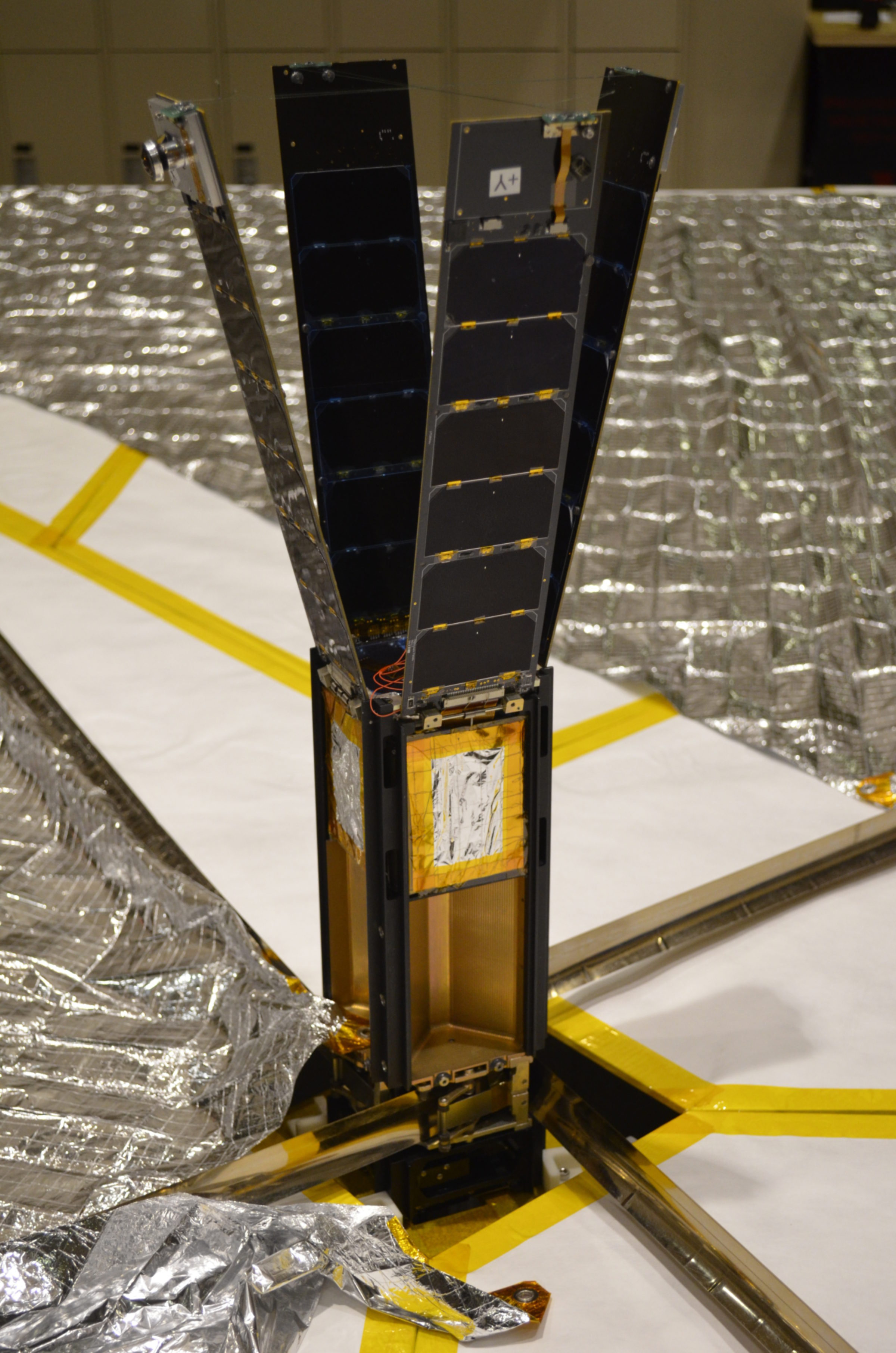
Several groups are now building solar sail spacecraft and plan to fly soon, within the next few years. Very similar to our LightSail spacecraft is one being developed at the University of Surrey in England. Surrey’s is CubeSat based, with a spacecraft called CubeSail that is even smaller than LightSail—intended not for solar sail flying but for operation in low Earth orbit as an atmospheric drag brake to remove satellite debris. This was how Nanosail-D was also used. They hope to develop their device commercially to help the orbit debris problem now of concern to satellite operators.
Another project with CU Aerospace, an Illinois company working closely with the University of Illinois, is also called CubeSail and is also intended to fly in the atmosphere to make measurements. It is somewhat academic to call these spacecraft, admittedly using sails but flying in the atmosphere, “solar sails.”
More significant is NASA interest. Very recently, NASA approved two solar sail missions with nanosats based on the LightSail design. One, called Lunar Flashlight, has a lunar destination, and one is a Near-Earth Asteroid Scout (NEA Scout). These are significant because they will fly beyond low Earth orbit with scientific objectives (although they are primarily technology test vehicles in the NASA program). Whereas Nanosail-D and LightSail are three-unit CubeSat designs (three CubeSats), Lunar Flashlight and NEA Scout are six-unit—basically twice the mass and nearly three times the sail area. But they are still nanosats. With the cancellation of the large Sunjammer solar sail project, it now appears that one of these two will be NASA’s first solar sail.
It seems that the time for sailing the cosmic ocean has finally arrived. The shipyards are busy with the first of the craft, and the technology advances are providing a basis for estimating performance and designs that can achieve the high performance needed in deep space.
The Story of LightSail, Part 1
The first installment of our three-part LightSail history series looks back at the origins of solar sailing and a NASA project to send a giant solar sail to Halley's Comet.
The Story of LightSail, Part 2
The second entry in our three-part LightSail history series remembers Cosmos 1, The Planetary Society's first solar sail that launched in 2005 aboard an ill-fated Russian rocket.


 Explore Worlds
Explore Worlds Find Life
Find Life Defend Earth
Defend Earth


